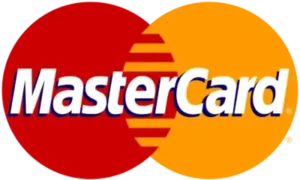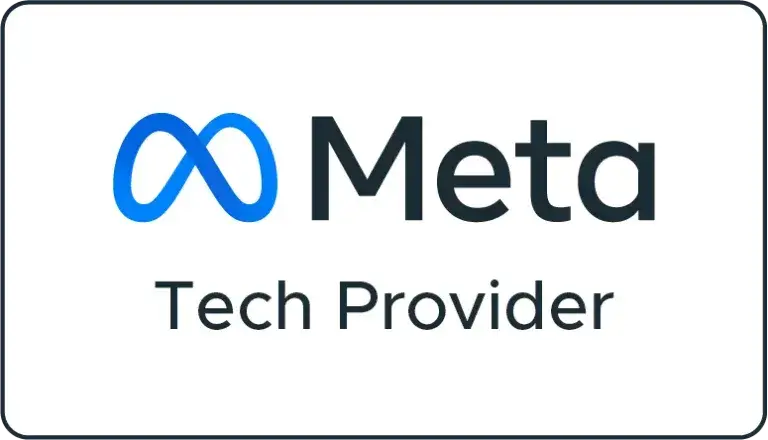When your current email marketing efforts aren’t hitting the target, or when you’re simply trying to refine your approach, it’s time to go back to basics. A thoughtfully crafted email marketing strategy will increase your open and click-through rates, and finally, your conversions. Whether you are a complete newbie or just need a refresher course, here is a step-by-step guide to kickstart your email marketing for digital marketing services.
What is Email Marketing?
First things first: let’s define what email marketing is. It’s a weapon in your marketing arsenal to help promote your business by reaching customers directly in their inboxes.
Email marketing is one of the most potent methods to reach out to those prospects who are not yet ready to buy but are interested enough to subscribe to your emails. It is also an effective way to stay in touch with your customers and keep your brand top of mind for when they may be ready to make another purchase. But cost-effectively reaching such an enormous audience makes it a must-have for any marketing strategy.
How to Effectively Market Your Products by Email
Know Your Audience:
Understand who it is you’re trying to reach. Knowing things like the age, location, and interests of your customers will help you tailor your emails to resonate with them. If you sell organic baby food, for example, then your target audience may be young, eco-conscious parents. That knowledge will help in drafting relevant content that addresses their needs directly.
How to Research Your Audience:
1. Collect and Analyze Customer Data
Gather information on customer purchase history, browsing behavior, and engagement metrics. Analyzing this data helps you identify trends and preferences, allowing you to tailor your marketing efforts to meet your audience’s needs.
2. Conduct Surveys and Polls
Engage your audience directly by conducting surveys and polls. This method is effective in gathering insights into customer preferences, product satisfaction, and demographic information, which can further enhance your segmentation strategies.
3. Utilize Google Analytics
Leverage tools like Google Analytics to gain deeper insights into your audience. Track demographic data, behavior flow, and other key metrics to understand how customers interact with your content and what drives their decisions.
Establish Precise Objectives:
Every email must be purposed. Are you welcoming new subscribers, selling something, or bringing value to your contacts? Establish the aim first, so that at a later stage, you can measure success. For instance, if you have recently received many followers through your social media campaign, then this may be your goal: Introduce these new subscribers to your brand and walk them through your offerings.
Examples of Email Marketing Goals:
Drive more traffic to the site by sending rich-content emails and linking to relevant pages.
Boost Sales:
Send emails offering special promotions or recommending products.
Improve Customer Retention:
Share exclusive offers with them or updates of loyalty programs.
Collect Feedback:
Mail them for reviews and areas of improvement to make your service better.
Choosing the Right Platform
First, an appropriate email marketing platform should be opted for. It must be aligned with the scale of operation and offer the features required. The whole idea is to choose a platform that simplifies designing, sending, and analyzing emails. Various demos and reviews will do a good service in finding a perfect fit for your business.
Key Features to Look for:
Automation Tools:
Set up workflows to trigger emails automatically by the actions of the users.
Segmentation:
Segment subscribers into groups based on a criterion like demographic data, engagement, or purchase history.
Analytics:
Tracking open rate, CTR, and conversion rate.
Choose the Campaign Type:
In your campaign, there should be a clear CTA and it should be designed as a series of emails that will keep your audience engaged over some time. The type of campaign you decide on whether a newsletter, a promotional offer, or a re-engagement series on the goals and audience preferences.
Popular Types of Campaigns:
Newsletters:
These are regular updates to your audience concerning company news, blog posts, or tips in the industry.
Welcome Emails:
The first email a subscriber receives is aimed at introducing one’s brand and setting expectations for future emails.
Promotional Emails:
These emails aim to drive sales by giving out discounts, offering special deals, or having time-sensitive promotions.
Re-Engagement Emails:
Reach out to those who haven’t been as involved with your brand in some time by offering them a special deal or showcasing any new product.
Organic List Building:
Grow your mailing list organically. Don’t buy lists, as those are full of unengaged contacts. Instead, utilize offering gated content, promoting it, or simply asking users on your website and social media to subscribe. It should be easy to opt-in and at the same time make sure each customer has consent to be on your mailing list.
Ways to Build Your List:
Signup forms:
Embed them on your website, blog, or landing pages.
Lead magnets:
Offer something in return that’s worth an email address, for example, a free eBook or discount code.
Social media:
Share the link to your email sign-up forms across all your social media outlets.
Referral programs:
Incentivize your current subscribers to refer their friends in exchange for some reward.
Segment Your Audience:
Why send one generic email to all of your subscribers when they’re all different? Segment your list based on a variety of factors, including geography, demographics, purchase history, and engagement. This lets you send them emails that are more relevant to them, thus personal and raising the likelihood that they open, read, and act on them.
Segmentation Criteria:
Demographics:
Understand your audience’s age and location to tailor content that resonates with their life stage and geographical context.
Behavioral:
Analyze purchase history, browsing activity, and engagement levels to refine your messaging based on past interactions and preferences.
Preferences:
Identify interests in specific product categories or content topics to ensure your emails provide relevant and engaging content.
Craft Emails with Impact
The meat of your email, though, is the content. Your subject line should decide whether your email will be open and catchy, while the inside of your email should be short and to the point with your CTA. Personalization should be done based on segments or templates of your audience to increase relevance.
Tips for Writing Emails:
Subject Line:
Short, interesting, and concise, such as “Exclusive Offer Just for You!”.
Body Content:
It should always be about the customer’s needs or interests and not completely about branding. Besides, it should contain a clear call-to-action, like “Shop Now” or “Learn More.”.
Email marketing is flexible, which means you can try various approaches until you find the best version. A/B testing-where you try two versions of your emails to determine which one works better-is the best thing if you want to fine-tune your campaigns. Go ahead and test elements such as subject lines, CTAs, and content to see what works best.
What to Test:
Subject Lines:
Try different wording, variations in length, or personalization techniques.
Send Times:
Test which days and times work best when your audience is most active.
Content Layout:
Experiment with text length, image placement, and button designs.
Measure Your Success:
You will only be able to tell for certain whether the campaign was successful by the measurement of results. Keep track of open rates, click-through rates, bounces, and unsubscribes. Those will give you insight as to what is working and what you may need to improve.
Key Metrics to Track:
Open Rate:
The percentage of people opening your email.
Click-Through Rate (CTR):
The percent of people that have clicked a link within the email.
Conversion Rate:
The number of recipients who took the desired action a purchase, for example.
Unsubscribe Rate:
Track this to ensure inadequate content or too frequent emails are not driving subscribers away.
Compliance and Best Practices in Email Marketing
In e-mail marketing, compliance isn’t just about adherence to the law; rather, it is about gaining and retaining confidence with your audience. Adhering to regulatory rules from the CAN-SPAM Act of the United States to the General Data Protection Regulation of the European Union will help in maintaining brand credibility and ensuring your message is well-received. Key Compliance Tips:
1. Permission-based email marketing:
It is always a must. In other words, before you send an email, it has to be explicitly agreed upon in advance that you can send communications to the recipient. That is permission-based marketing. Opting in gives you some assurance that those receiving your emails want to hear from you, hence not only improving engagement but also reducing spam complaints. This can be done through various channels, such as sign-up forms on your website, where people would voluntarily give their e-mail addresses in exchange for some valid content or offers.
2. Use an Easily Available Unsubscribe Link in Each Email:
Offering an easily available opt-out option is not only legally required but is also considered best practice in keeping good relations with subscribers. When somebody no longer wants to hear from one, he should be able to unsubscribe quickly. Simple: with no extra steps, hoops, or hurdles. Having an unsubscribe link visible at the bottom of every email is a sign that one respects the preferences of his audience and helps to keep a clean email list since it only contains people who are engaged.
3. Be transparent about who you are and why you’re emailing:
Transparency is always an important ingredient for any trust-building equation. Your emails should clearly mention who you are and why you’re mailing the recipient. That means using a recognizable sender name and email address, along with a clear subject line that reflects the accurate reason for writing the email. Additionally, the body of the email must include a short explanation as to why this person is receiving the email-for instance, a reminder of subscription to updates or newsletters. Being open about who you are and what your intent is will also minimize misunderstanding and maximize the chances that your e-mails will be perceived as value additions, rather than intrusion.
It is a strong tool and economical for reaching out effectively to customers, boosting customer engagements, and driving business growth, provided it is implemented rightly. In defining your target audience, choosing the right platform, and setting clear goals while following a structured approach to creating and testing your e-mails, you will build successful campaigns that reach your target audience. Also, remember to segment your lists for personalized content, measure your results to refine your strategy, and always follow email marketing regulations as a way to help you retain the trust and credibility of your contact. In other words, this will get you going to make the most of email marketing for your business.
FAQs
Q: What is email marketing?
A: Email marketing is a strategy for sending promotional messages, updates, and offers directly to a targeted group of subscribers’ inboxes. It helps businesses engage with customers, build relationships, and drive conversions.
Q: How do I build an email list?
A: Build your email list organically by using sign-up forms on your website, offering lead magnets like free eBooks or discounts, promoting your list on social media, and incentivizing referrals.
Q: What should I include in my emails?
A: Effective emails should have a compelling subject line, personalized and relevant content, a clear call-to-action (CTA), and an easy way for recipients to unsubscribe if they wish.
Q: What are some best practices for email marketing?
A: Best practices include obtaining permission before sending emails, ensuring a clear and easy-to-find unsubscribe link, being transparent about who you are and why you’re contacting recipients, and segmenting your list to send relevant content.













